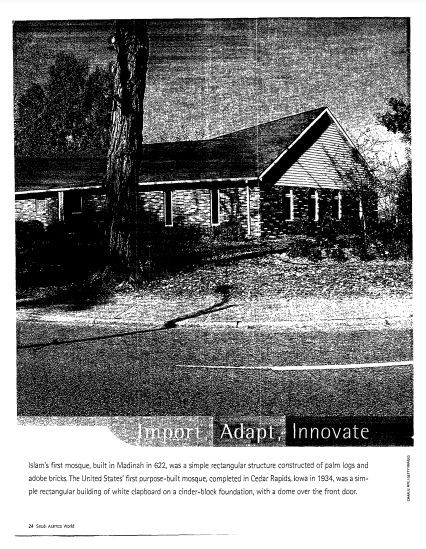

The article explores the architectural evolution of mosques in America, highlighting how Muslim communities have balanced tradition and modernity. He examines three primary approaches to mosque design: direct importation of traditional architectural styles, adaptation of existing structures, and innovative designs that blend Islamic aesthetics with contemporary American influences. Through historical analysis and case studies, Khalidi illustrates how cultural identity, local materials, and social dynamics shape the diverse architectural landscape of American mosques. The article underscores the mosque’s role as both a religious and cultural institution, reflecting the pluralistic nature of Islam in the United States.
Khalidi, Omar. “Import, Adapt, Innovate: Mosque Design in the United States.” Saudi Aramco World 52, no. 6 (2001): 24-33.
I agree to the terms outlined below:
You agree to upload and assign Mosqpedia Database the rights to use the content worldwide and in perpetuity across all current and future media platforms. Mosqpedia Database may edit, copy, adapt and translate your contribution.
The content will be distributed under the Creative Commons Attribution-Deed – Attribution-NonCommercial-NoDerivatives 4.0 International – Creative Commons
All data will be stored in line with data protection regulations.